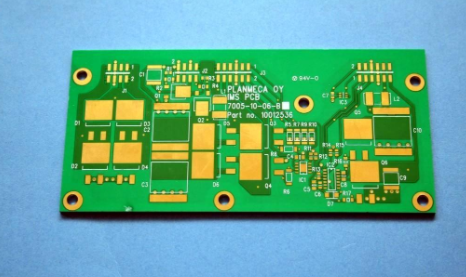1. Purpose
Standardize the PCB process design of the product, stipulate the relevant parameters of the PCB process design, so that the PCB designmeets the technical specifications of manufacturability, testability, safety, EMC, EMI, etc., and build the product process, Technology, quality and cost advantages.

2. Scope of application
This specification applies to the PCB process design of all electronic products, and is used in but not limited to PCB design, PCB board investment board process review, single board process review and other activities. If the content of relevant standards and specifications before this specification conflict with the provisions of this specification, this specification shall prevail.
3. Definition
Via: A metalized hole used for inner layer connection, but it is not used for inserting component leads or other reinforcing materials.
Blind via: A via hole extending from the inside of the printed board to only one surface layer.
Buried via: A via hole that does not extend to the surface of the printed board.
Through hole (Through via): a through hole extending from one surface layer of the printed board to another surface layer.
Component hole: A hole used for fixing the component terminal to the printed board and electrically connecting the conductive pattern.
Stand off: The vertical distance from the bottom of the body of the surface mount device to the bottom of the pin.
4. References/reference standards or materials
TS-S0902010001 <
TS-SOE0199001 <
TS-SOE0199002 <
IEC60194 <
IPC-A-600F <
IEC60950
5. Normative content
5.1 PCB board requirements
5.1.1 Determine the PCB board and TG value
Determine the board material selected for PCB, such as FR-4, aluminum substrate, ceramic substrate, paper core board, etc. If a board with a high TG value is selected, the thickness tolerance should be indicated in the document.
5.1.2 Determine the surface treatment coating of the PCB
Determine the surface treatment coating of PCB copper foil, such as tin plating, nickel plating, or OSP, etc., and indicate in the document.
5.2 Thermal design requirements
5.2.1 High-heat components should be placed in the air outlet or a location conducive to convection
In the PCB layout, consider placing high-heat components at the air outlet or at a location that is conducive to convection.
5.2.2 Higher components should be placed in the air outlet and should not block the air path
5.2.3 The placement of the radiator should be considered conducive to convection
5.2.4 Temperature sensitive instruments should be kept away from heat sources
For heat sources whose temperature rises above 30°C, the general requirements are as follows:
a. Under air-cooled conditions, the distance between electrolytic capacitors and other temperature-sensitive devices from the heat source must be greater than or equal to 2.5mm;
b. Under natural cold conditions, the distance between temperature-sensitive devices such as electrolytic capacitors and the heat source must be greater than or equal to 4.0mm.
If the required distance cannot be reached due to space reasons, a temperature test should be conducted to ensure that the temperature rise of the temperature-sensitive device is within the derating range.
5.2.5 Large-area copper foil requires thermal insulation tape to be connected to the pad
In order to ensure good tin penetration, the pads of the components on the large-area copper foil are required to be connected to the pads with thermal insulation tape, and thermal insulation pads cannot be used for the pads that require a large current of more than 5A, as shown in the figure:
5.2.6 The heat dissipation symmetry of the pads at both ends of the 0805 and below 0805 chip components that have been reflowed
In order to avoid the deviation and tombstone phenomenon after reflow soldering, the pads at both ends of the chip components below 0805 and below 0805 should ensure the symmetry of heat dissipation, and the width of the connection between the pad and the printed wire should not be greater than 0.3 mm (for asymmetric pads), as shown in Figure 1.
5.2.7 How to install high-heat components and whether to consider a radiator
Make sure that the installation method of high-heat components is easy to operate and weld. In principle, when the heating density of the components exceeds 0.4W/cm3, the lead legs of the components and the components themselves are insufficient to dissipate heat, and measures such as heat dissipation nets and bus bars should be used to improve For over-current capability, the legs of the bus bar should be connected at multiple points. Wave soldering or direct wave soldering after riveting should be used as much as possible to facilitate assembly and welding; for the use of longer bus bars, consider the heat converging when the wave crest is used. PCB deformation caused by mismatch of thermal expansion coefficient between strip and PCB.
In order to ensure easy operation of tin lining, the width of the tin channel should not be greater than or equal to 2.0mm, and the distance between the edges of the tin channel should be greater than 1.5mm.